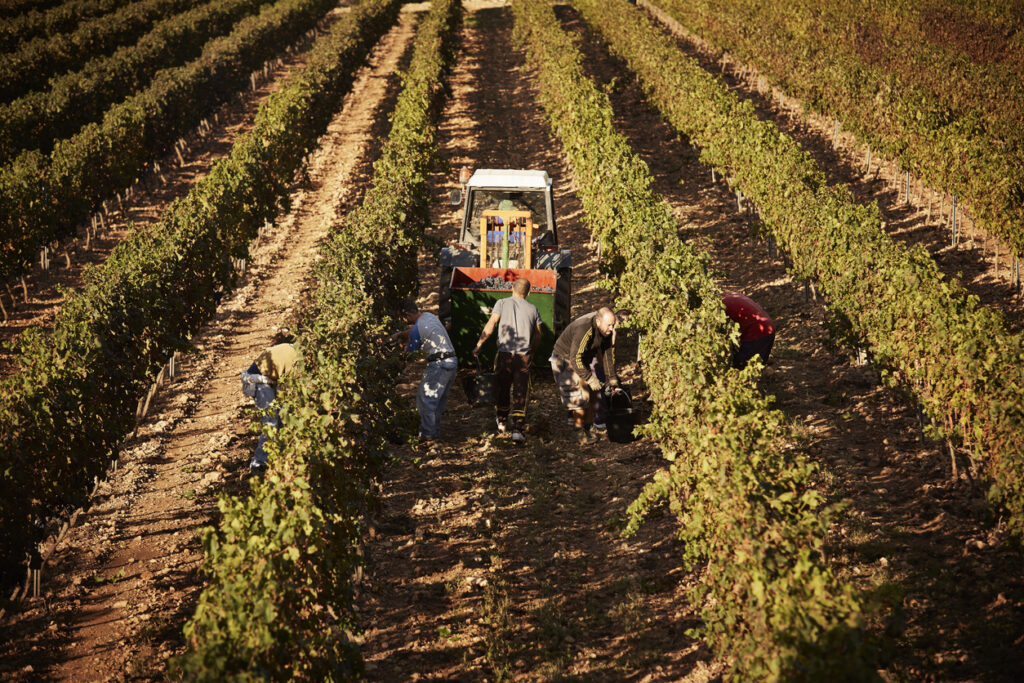Straw Wattles 101 – The Effective Tool for Preventing Soil Erosion

If you’re a farmer or grape grower, then you know that one of your main challenges is preventing soil erosion. When soil is weakened because of erosion, it isn’t able to absorb as much water. This can lead to flooding, which can result in a large amount of standing water. When soil stays flooded, it can interrupt the planting of your new crops. Fortunately, straw wattles are effective tools for preventing soil erosion.
Here’s what you need to know about straw wattles along with how A&J Vineyard Supply can help.
What are Straw Wattles?
Most likely, you’ve heard of straw wattles. However, you may not understand what they are. Also known as noodles, straw worms, or straw bio-logs, these are erosion-control devices that fight soil erosion.
They’re made of weed-free substances, such as rice, wheat, or wood fibers, blown or stuffed into a mesh or burlap casing and measure about 25 feet long and 9 inches wide but aren’t that heavy. Since they’re exceptionally flexible, you can easily work with them.
The Benefits and Uses of Straw Wattles
Soil Erosion Control
One of the main uses and benefits of straw wattles is for controlling erosion. Because they’re planted on slopes, these tubes are ideal for stopping excess water from running down the hills. This is critical when you need to prevent soil erosion that’s the result of heavy rainfall and winds.
When soil doesn’t have protection from the wind, erosion results, carrying the soil to another area. In a similar way, water erosion happens by unprotected soil being whisked away by windy weather to another spot. This kind of erosion mostly damages the most fertile portion of the soil, which is the top layer. Tragically, erosion causes the loss of almost 24 billion tons of fertile soil each year. This is why straw wattles are so essential so that the process of soil erosion can be slowed down.
Sediment Control
Another use for straw wattles is for sediment control, which pertains to keeping eroded soil off of a construction site so that excess runoff and chemicals don’t pollute surrounding areas and water sources. Although farmers can use silt fences for sediment control, they cost more and don’t have the strength of straw wattles. Because silt fences are constructed from thin synthetic fabric, they can easily break or bend during flooding. However, straw wattles lie low and are more affordable and stronger.
Infiltration
The natural process involving water moving down into the soil is known as infiltration. This process is essential for providing just the right amount of water to an environment. However, consider that water can move too quickly through the soil, depending on factors, such as soil type and the inches per hour that it’s absorbing.
When excess water is on the ground, the soil is unable to absorb it properly. Thus, you need healthy filtration for your land to be able to store water for plant growth, along with soil organisms.
Other important benefits
In addition to being an ideal solution for filtration, straw wattles can be cut and joined together. They have natural, biodegradable materials. What’s more, there’s no need for a clean-up. They can be easily staked into place and are effective for storm drains or inlets. Moreover, they add roughness to the soil.
Where Do You Put Straw Wattles?
It’s extremely important that you install your straw wattles correctly so that they work properly. Even though they can perform on a stream bank, don’t place them in the pathway of high water flow.
When installing on a slope, place them on a contour at the end of a row that has somewhat of a downward angle. This is so that you can stop water accumulation in the mid-section. Site conditions, such as soil type and soil gradient are the primary factors that should determine vertical spacing.
The Bottom Line
Straw wattles are an effective and affordable method for preventing soil erosion. As a result, this can lead to healthier soil as well as less pollution, a better environment, and more productive crops.
For more information on erosion control methods and how A&J can help, contact us.
